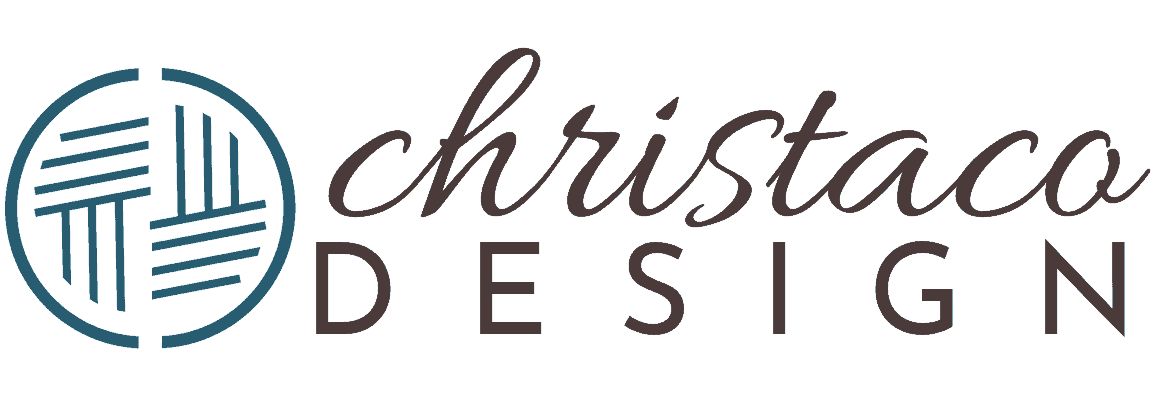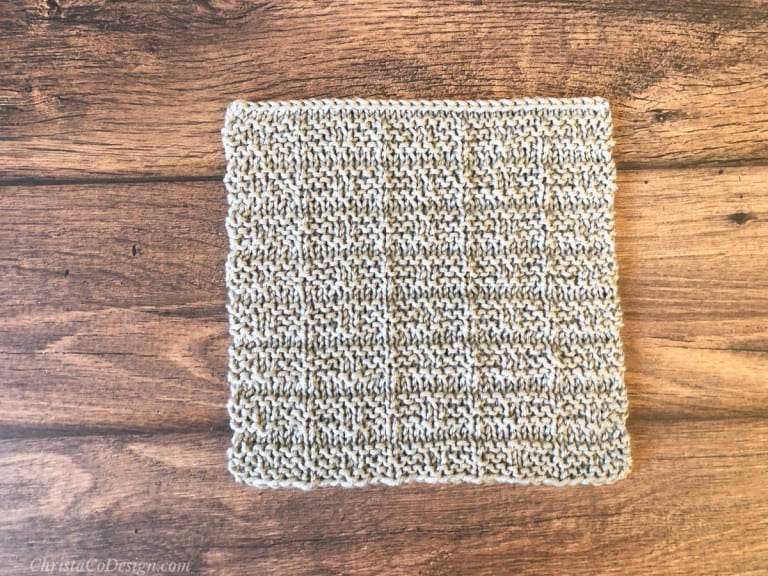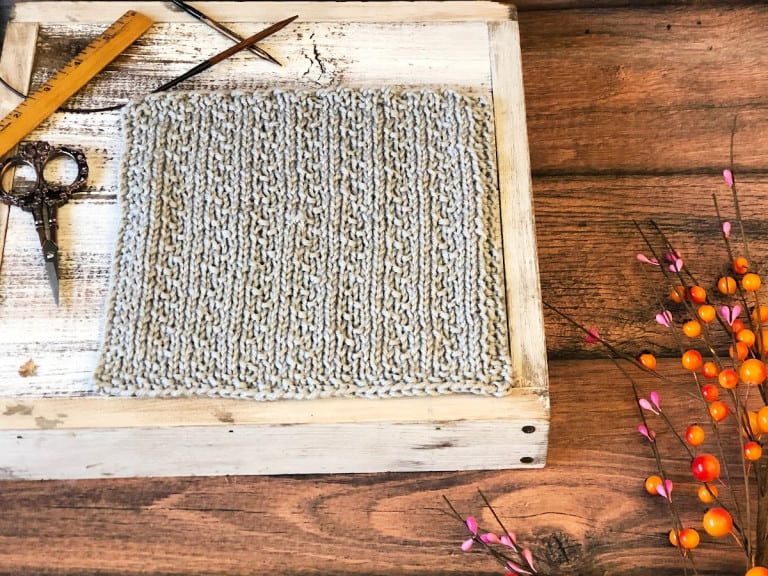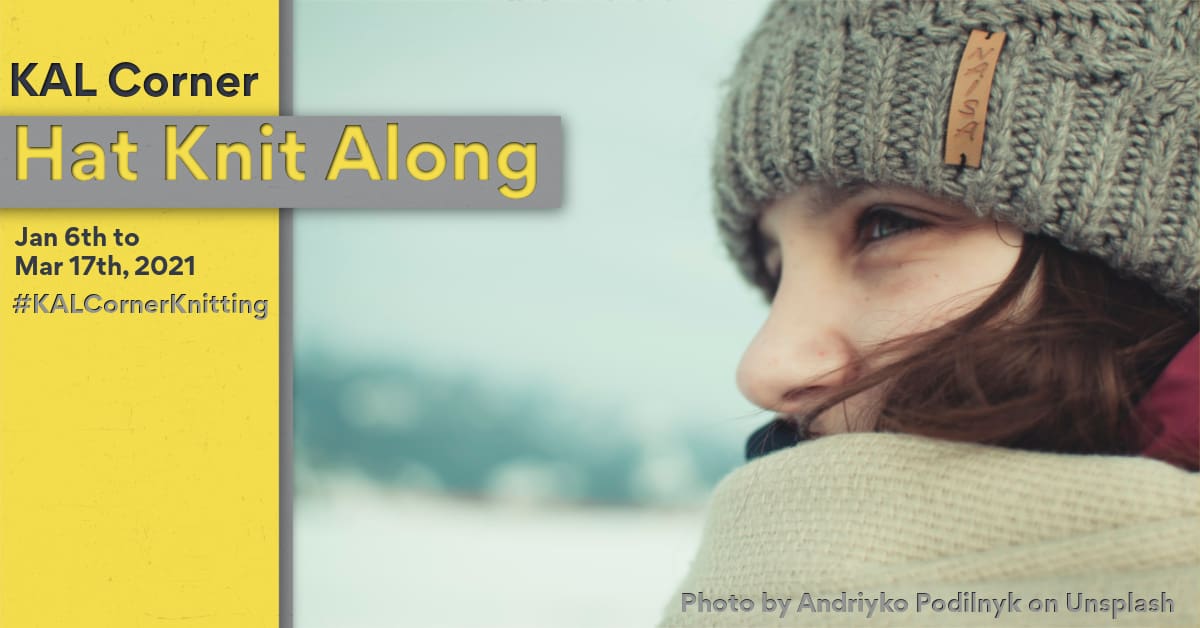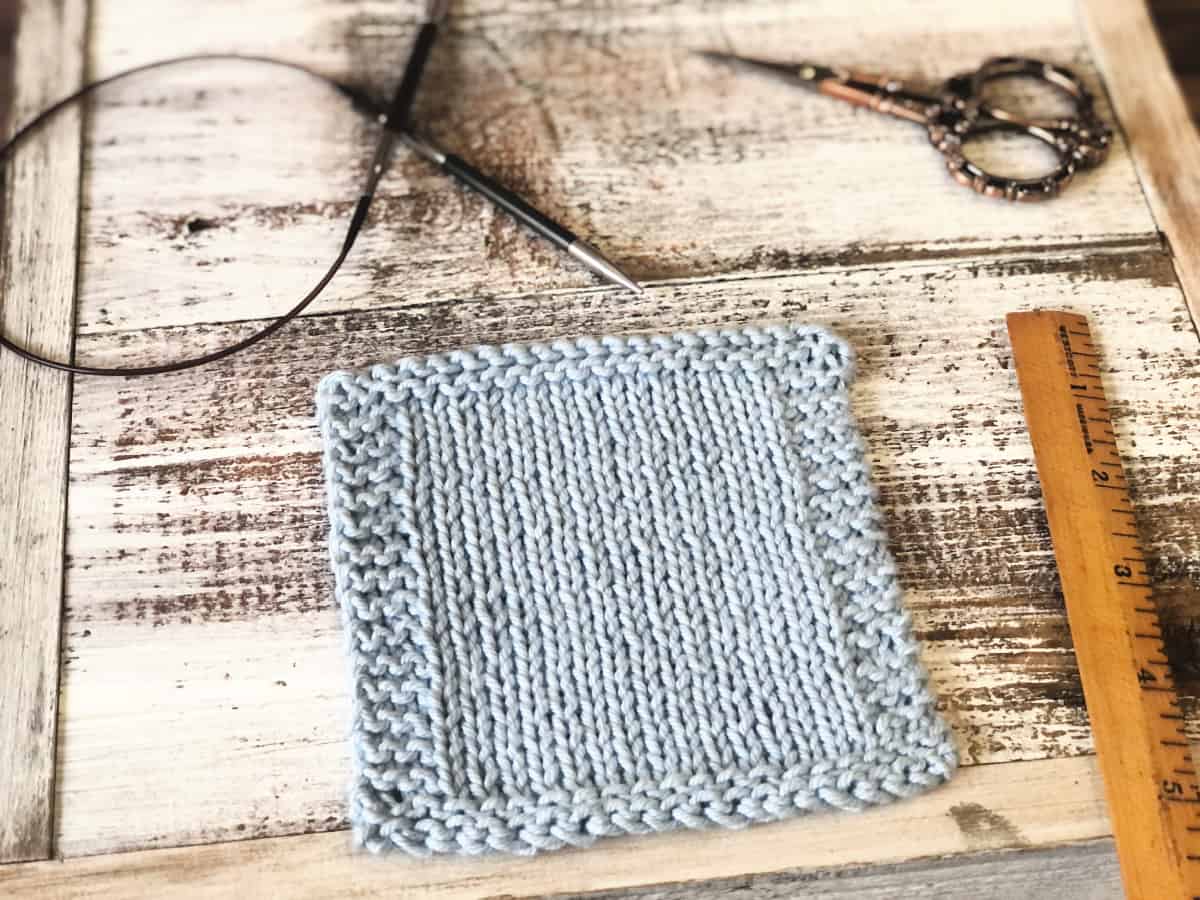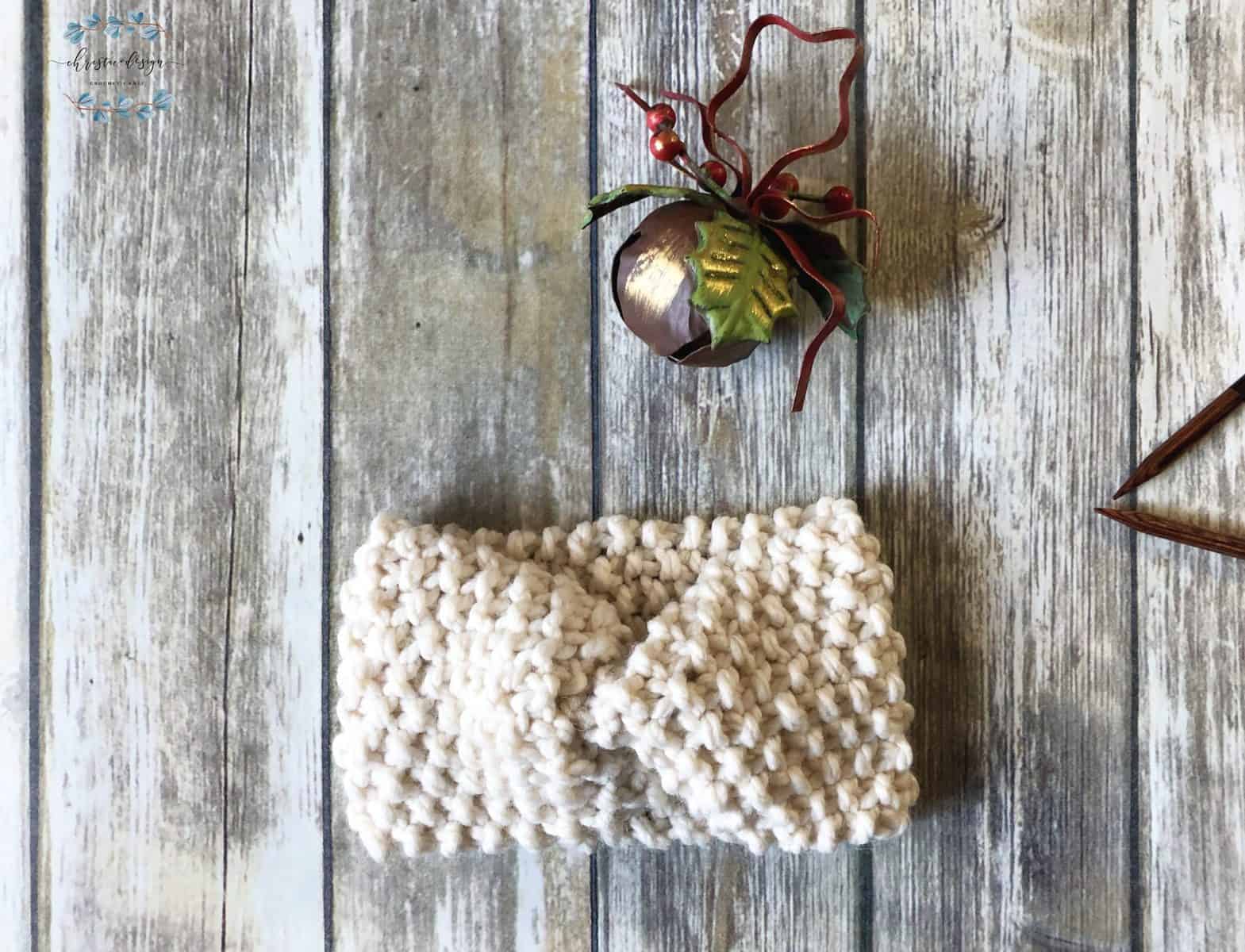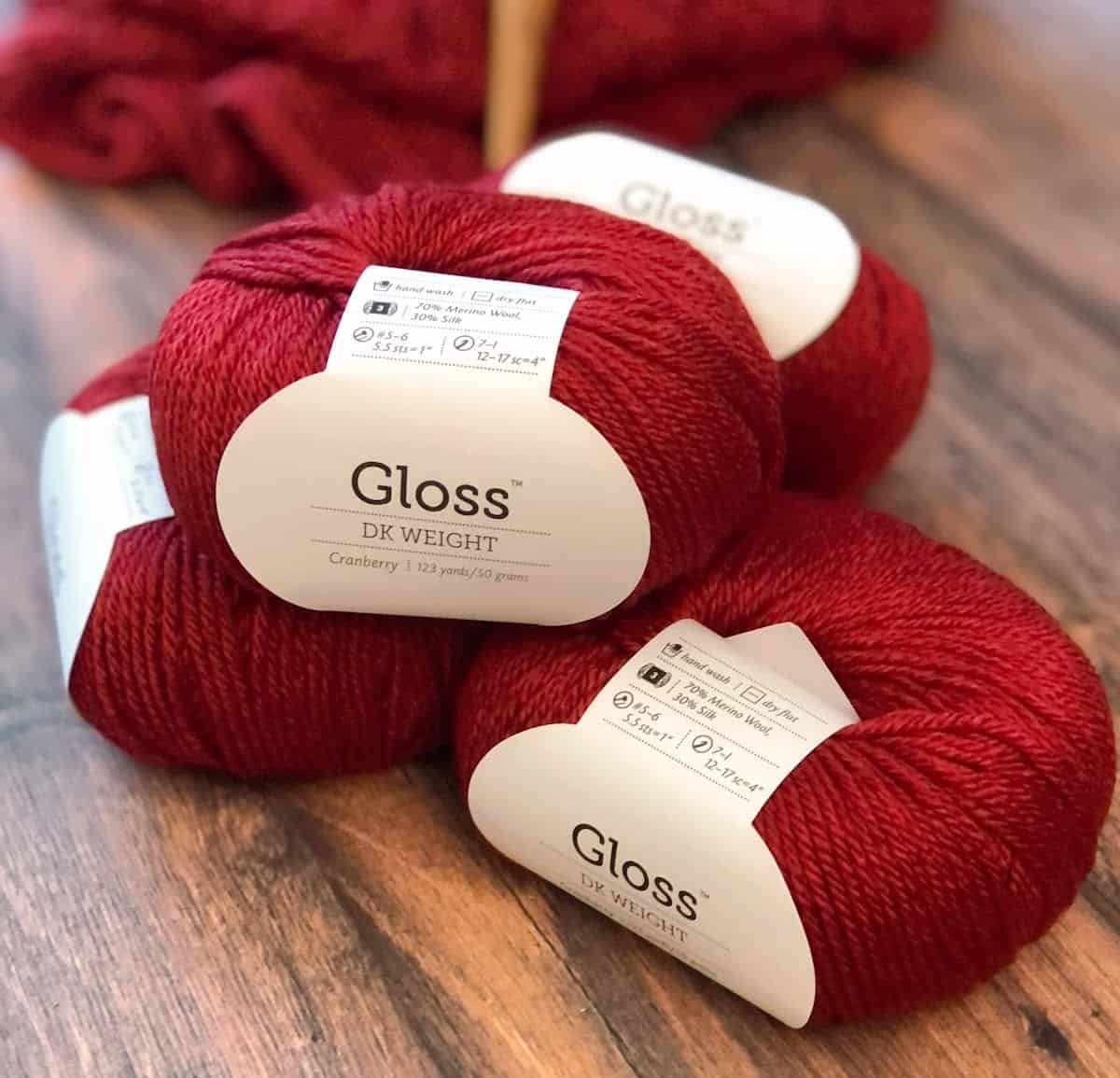Knitting on the Edge Selvedge Stitches
A new knitter may be surprised when they notice that the stockinette stitch pattern curls at the edges. This can be annoying if you want your knitting projects to lay flat!
To combat curling edges in knitting we add selvedge stitches to the beginning of the row and the end of a row. You might also call them selvage stitches. Using a selvedge edge allows your work to lay flat.
Selvedge stitches are simply the edge stitches. These are the first stitch of every row and the last stitch of every row.

This post contains affiliate links, I may earn a fee. Read more disclosure policy.
What Are Selvedge Stitches Used For?
All selvedge stitches frame the sides of your knitting. Different stitches will suit different purposes.
- You can use selvedge stitches to help your main fabric lay flat.
- Visible edges can have decorative selvedges.
- When seaming you use the first and last stitches.
Selvedge Stitches To Lay Flat
If your goal is to keep your edges from curling then you’ll need a number of stitches at the beginning of a row and at the end. 3 – 5 extra stitches are the most common number to use on the edge of your knitting.
These stitches will create a border on the vertical edge of the fabric. You can add rows to start and finish your piece of knitting to match the sides of your knitting so you get neat border.
Depending on your knitting pattern you may or may not need selvedge stitches.
Stitch Patterns That Lay Flat Without Selvedge Stitches
Garter stitch which is knits on both sides of your work lays flat without adding any extra to the sides of the knitting. It’s great to add to other stitches as a selvedge too.

Seed stitch is where you alternate knit stitches and purls. This make a nice all over texture due to the contrast of the purl bump against flat knits throughout.

Both these stitches are great options for a basic type of selvedge.
As I mentioned before the stockinette stitch lays flat in the center but the edges curls up. This is because of the even arrangement of knits on the right side and purls on the wrong side.

To get the edges to lay flat we need to break that up. The garter stitch edge and seed stitch are two easy stitches you can use to create a border for stockinette.
Visible Edges
The easiest and most common way to knit neat edges is with slipped stitches.
Slip Stitch Edge
Some patterns will have you slip 1 on the first stitch of every row. This helps to give you neat edges on stitch patterns like garter stitch that lay flat but have messy edges. A slip one edge will not stop your fabric from curling.

To use this edge, insert your knitting needle purl wise and slip the first stitch on to your right hand needle. This creates a big loop as it gets pulled up to the next row. Essentially the one stitch covers two stitches on the edge.
Follow your pattern for the rest of the row. These slip 1 patterns usually have you knit the last stitch of the row.
There are different ways to slip one: knit wise, with yarn in front, with yarn in back. All these variations will depend on your stitch pattern. You can experiment with these on different fabrics to find the best way for your stitch.
Using a slip stitch edge is very common on garter stitch and looks great for any stitch pattern that has a visible edge.
Seaming with Selvedge Stitches
While the slip stitch edge looks great, it’s not the best if your piece needs seaming. To seam you need the one to one ration of stitches to rows. Not to mention using the bar of the garter stitch is useful in invisible seams.
If you’re looking for advanced techniques or specific edge treatments then Norman goes into extensive detail on the best edge stitch techniques and when to use them here.
